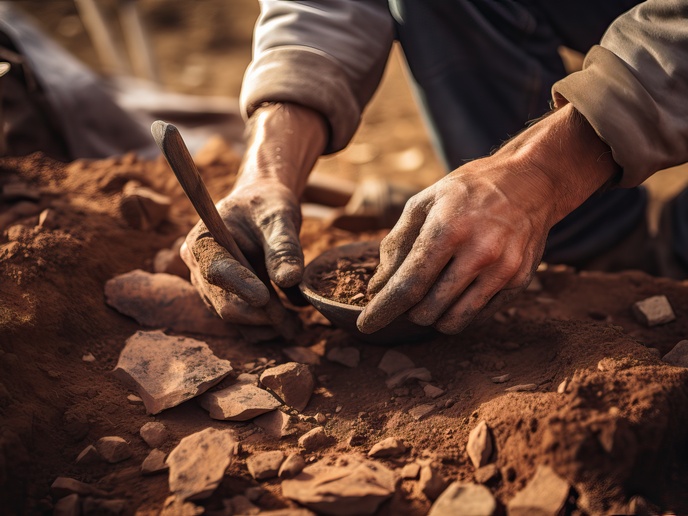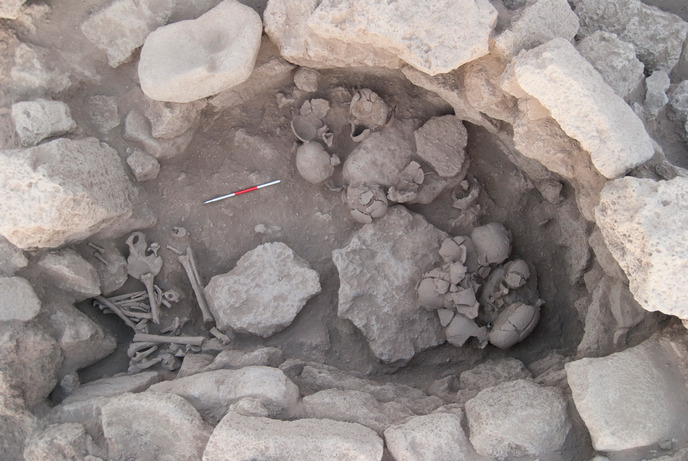Archaeological innovations reveal secrets of ancient Japan
Archaeological research is not something that is carried out in a vacuum. Chemists and physicists for example are needed to accurately date objects, and historians are required to put discoveries into their proper context. “Usually, this kind of research is done in an interdisciplinary way, step by step,” explains BE-ARCHAEO project deputy coordinator Eliano Diana from the University of Turin in Italy. “We wanted to move towards a more transdisciplinary approach, in the sense of bringing these fields of expertise much closer together.” The aim of this was to enable young researchers, building up expertise in their particular fields, to see challenges from other perspectives and appreciate the role of other disciplines.
Transdisciplinary approach to archaeology
The BE-ARCHAEO project focused on the archaeological excavation of a burial mound dating back to approximately the late 6th to early 7th century CE, located in Okayama Prefecture in Japan. Such sites are important in better understanding the rituals, the regional relationships and the formation of ancient states in Japan. The project was supported by the Marie Skłodowska-Curie Actions programme, and involved early-stage researchers from a number of European countries spending time in Japan. At the site, archaeologists from both Europe and Japan collaborated with chemists, physicists, biologists, geologists, veterinary surgeons and soil scientists. Journalists, video makers and IT experts also participated in archaeological activities. “Seeing the way other disciplines face the same problems helped researchers to change their approaches,” says Diana.
Database with interlinked information
A key objective of the project was to build a database, where all interlinked information gathered from the archaeological site could be combined in one accessible space. “This database, which is freely available, contains all the scientific information related to the excavation,” adds Diana. “We have for example a digital map of the tombs, which is then linked to findings such as objects discovered, and descriptions of our scientific investigations.” These findings include shards of pottery, which archaeologists believe were for both cooking and ceremonial purposes. Animal bones and shells were also unearthed. An important element of linking all these gathered artefacts and data was ensuring that all published information would be understandable to all scientists. “We wanted to be transdisciplinary rather than just interdisciplinary,” explains Diana. In other words, data from each specialised field has not been published in a silo, but rather linked to other disciplines to create a more holistic picture of the excavations. In addition, the database is not only transdisciplinary – it has also been translated into both English and Japanese. The project team also sought to make these research findings accessible to the general public. An exhibition of BE-ARCHAEO’s findings was recently held at the University of Turin, helping bringing ancient Japan to life.
European–Japanese archaeological cooperation
Another strength of the project was bringing European and Japanese researchers together. “This project was a great opportunity for researchers to encounter completely different approaches,” notes Diana. “A lot of fruitful collaboration was carried out, and we hope that a new project, building on BE-ARCHAEO, will be carried out next year.” The goal is that this follow-up project will build on some of the excavation findings that have been made. These were mainly potteries and metal fragments. “The idea is to continue our investigations into these artefacts,” says Diana.
Keywords
BE-ARCHAEO, archaeology, Japan, physicists, chemists, excavation, pottery







